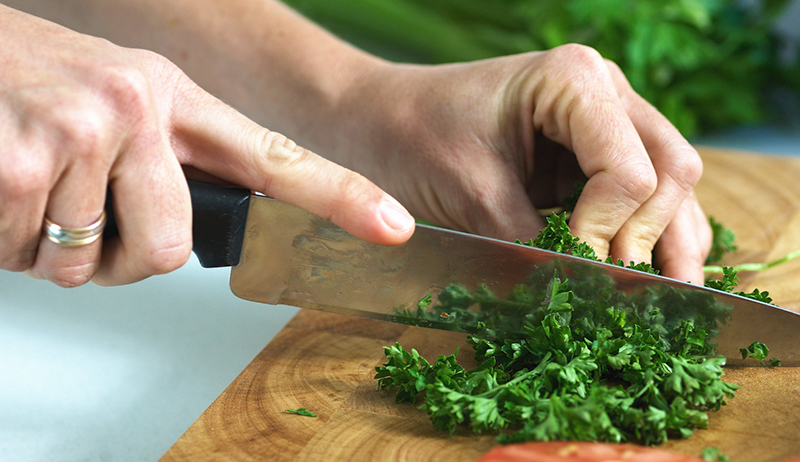
Early on in my farming career I learned that people who really want to support and eat local food don’t always know how to prepare it. And because we run a CSA, where new and different veggies are introduced every week, it became evident that if we didn’t help them learn, we were going to lose customers.
People hate to waste, so if they can’t find ways to easily use the food you bring them they may decide the CSA is not for them and not sign up the following year. Being busy farmers, we had to think of simple ways to offer cooking advice that did not add much more work, and in some cases, even added value to our product. The ability to cook is an empowering and exciting thing, and customers appreciate any effort you put toward helping them know how to use your products because it gives them skills that will last them a lifetime. Don’t know how to cook well yourself? Don’t worry, I’ve got tips for that, too. So let’s start there.
Educate Together
If you do not know that much about cooking, don’t sweat it. Take a few minutes every day to study up a little bit on preparing the product you sell. If you’re a beef producer, watch some videos on how to create the perfect sear, for example. If you’re a vegetables producer, look for some recipes involving something you grow. Then—and this is the kicker—share those videos or articles or recipes on your social media or email them to your email list. This sounds small, but what you are doing is making your education pay for itself by simultaneously educating your customers. Plus, it gives you fodder for your social media, which is helpful in keeping people engaged.
Offer Recipes & Storage Advice
Every week of our CSA, we provide a newsletter with the veggie box. In this letter is information about what went on that week on the farm, a list of the crops with advice on how to store each one, and a recipe containing at least a few of the ingredients in that week’s share. It is our goal to get to the point where we can include every ingredient in that recipe. Also, instructing people on how to properly store and handle your product will keep them from wasting or damaging it. You want them to feel your product is worth the investment, but just selling a good product may not always be enough.
Make Videos
Producing home videos is easier than ever these days thanks to things like YouTube, Facebook Live and Instagram Stories. These outlets do not require masterfully shot and edited videos, and they can be posted in just minutes. To save time, err on the side of live and candid to make the process efficient. In fact, don’t edit them. Make them fast and impromptu, but make them fun. The videos you produce could be of dishes you made, cooking tips you have or found, and anything that connects your customers to their food. The goal is to not only get them invested in you and your farm, but to teach them a little about the food they buy and how to use it.
Host Classes
If you are a talented cook, or you can hire one to help you, consider hosting some on-farm cooking classes. This may require a commercial kitchen in some areas, but it may be worth investing in one eventually, because it could be a good income stream. Indeed, cooking classes are an event you can charge for and could very well bring in a fair amount of money while teaching your customers how to use the food you sell, which in turn may increase customer retention.
Any time that you can make money by increasing the value of your product, it is a successful venture. And if more people learn to cook from it, all the better.




